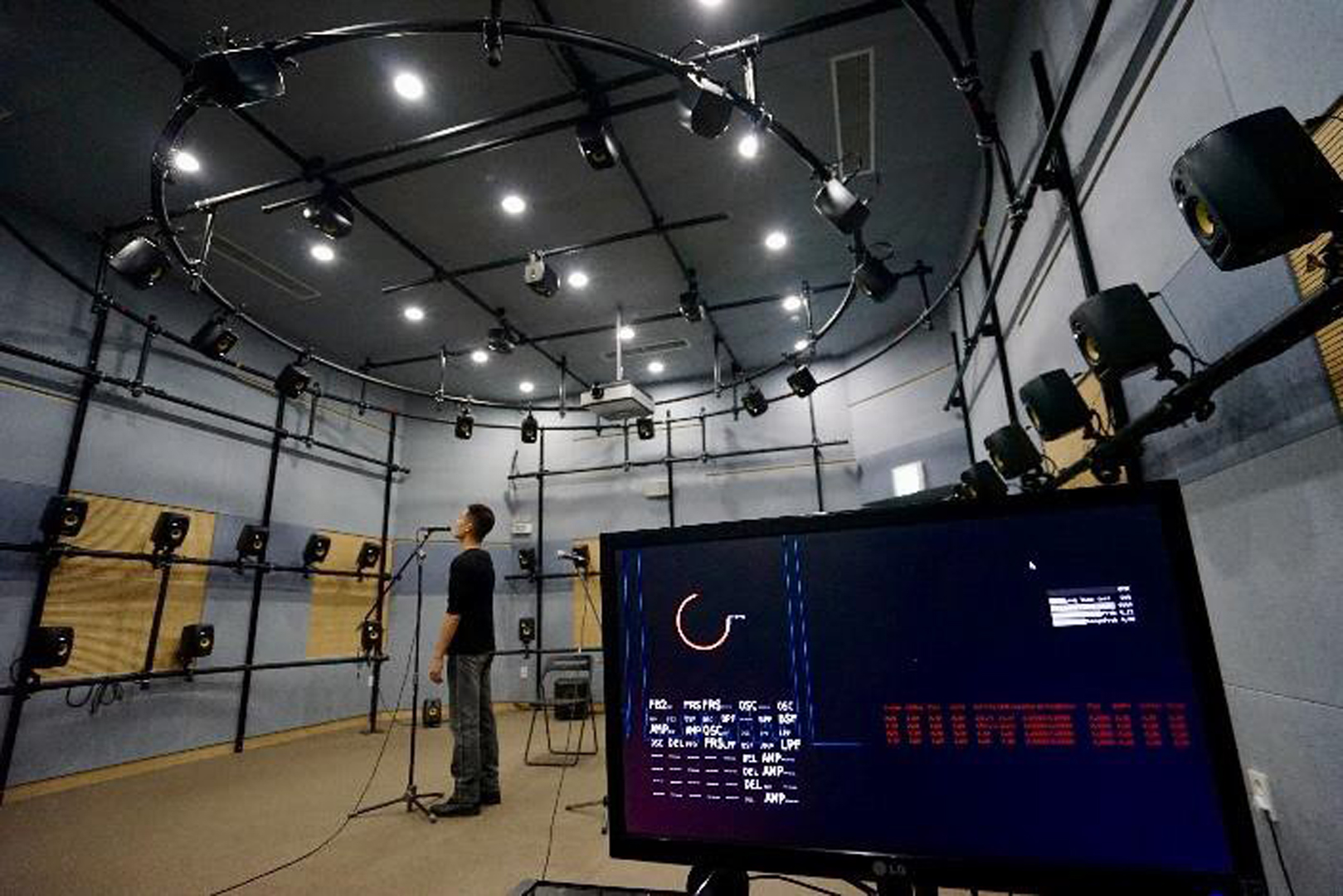“Sonic Participation in the Evolving Audio Feedback System” presented by Kim, Oh, Nam and Wakefield
Session Title:
Presentation Title:
Presenter(s):
Abstract:
In this talk, we discuss two scenarios for interactive sound installations utilizing audio feedback. We introduce our system generating various audio feedback sounds by evolving toward chosen sonic features, and discuss several design issues for how human interventions contribute to the formation of an acoustic space while intricately connecting with the system.
Audio feedback has been randomly dealt in electronic music improvisation, and our audio feedback system was designed to adapt toward certain chosen sonic properties. The system allows users to select in real-time sonic characteristics as the target conditions of the system. Adaptation toward such conditions is achieved using second-order structure which can organize and replace internal signal processing algorithms. This second-order structure uses an evolutionary process by selecting and changing the types and parameters of signal processing components.
The original system itself could be an interactive sound installation that allows control of its parameters, however, the slow adaptation may not be interesting for public: another interaction needs to be designed for immediate response. We thought that the environmental interference was a suitable candidate, meaning that the physical presence and movements of humans affect room acoustics and their sounds are included in the ambient noise, which acts as a perturbation to the system’s evolution. We designed two scenarios utilizing the environmental interference, especially focusing on the perturbation by human sounds. Demo vides are available on our website [1].
The first scenario pursues the tension between the system’s feedback sounds and audience sound (with strong echo effect). Whereas our system originally uses the second-order structure to randomly generate and evolve the algorithms, parts of the structure could be fixed to a specific form in order to emphasize user participation through strong echo effects (a little delay and amplifier). The audience thereby could interact with the system by experiencing echo feedback of their own sounds and interference to the audio feedback.
The second scenario is based on Alvin Lucier’s I Am Sitting in a Room that continuously repeats playing and recording of its sounds. Instead of transforming the sound, it is about evolution of the structures processing the recorded audience sounds. The audience record their sounds while pressing a button, and begin to operate the system. The input signal consists of a combination of the recorded sound signal and real-time incoming audio feedback signal. Immediate response from the user participation is emphasized by beginning with a fixed signal-processing structure that consists of amplifiers and delay lines. Audience experience the change of their sounds through the evolving algorithms.
Besides pursuing the tension between the feedback sounds and human sound, space perception formed by the feedback sound is another interesting experience. As sound is a medium that could form an energetic space, in which boundaries are decided by sensory qualities, our system could reinforce the formation of such energetic space through the natural generation of multi-channel audios.
[1] Link to this ISEA2016 Artist Talk





